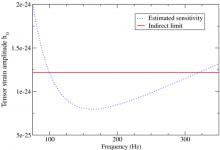
Abstract
We describe a search underway for periodic gravitational waves from the central compact object in the supernova remnant Cassiopeia A. The object is the youngest likely neutron star in the Galaxy. Its position is well known, but the object does not pulse in any electromagnetic radiation band and thus presents a challenge in searching the parameter space of frequency and frequency derivatives. We estimate that a fully coherent search can, with a reasonable amount of time on a computing cluster, achieve a sensitivity at which it is theoretically possible (though not likely) to observe a signal even with the initial LIGO noise spectrum. Cassiopeia A is only the second object after the Crab pulsar for which this is true. The search method described here can also obtain interesting results for similar objects with current LIGO sensitivity.